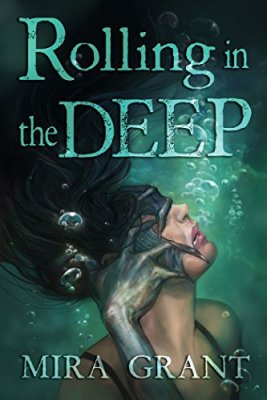 Enchantress of Numbers
Enchantress of Numbers
by Jennifer Chiaverini
Historical Fiction
426 pages
Published December 2017
Enchantress of Numbers has been making the rounds lately – it seems there’s been an interest in books about women in STEM, which is a good thing. Ada Lovelace is considered to be the first computer programmer, though “computers” as we know them didn’t really exist at the time. What she wrote was an algorithm for making a machine spit out a specific result – a machine that was never actually built. Still, her contributions to the very early science of computing were invaluable and she is (rightly) revered for them. Sadly, she died in her 30s from ovarian cancer – a loss that undoubtedly slowed down the advancement of early computing.
The early parts of the book are told in third person, about her mother’s marriage to Lord Byron, and Ada’s own birth. From there, Ada tells the story in first person, as she grows up with her strict mother in English Aristocratic Society.
It is historical fiction, so the author has taken some liberties, though I was a bit confused that in the book she meets Mr. Babbage some time before meeting Mrs. Somerville; Wikipedia says Lady Lovelace was introduced to Mr. Babbage by her mentor, Mrs. Somerville. Odd that the author chose to change that up.
I’ve definitely read better historical fiction – Philippa Gregory is a personal favorite – but this wasn’t bad. It was a little slow, and a little dry in spots, but it was overall good. If you weren’t interested in Ada Lovelace or early computing and mathematics I don’t think the book would be very enjoyable at all. But if you do like those things, and are willing to put up with a little bit of boredom, it’s a decent book.
This is also my PopSugar 2018 Challenge pick for “novel based on a real person.”
From the cover of Enchantress of Numbers:
The only legitimate child of Lord Byron, the most brilliant, revered, and scandalous of the Romantic poets, Ada was destined for fame long before her birth. But her mathematician mother, estranged from Ada’s infamous and destructively passionate father, is determined to save her only child from her perilous Byron heritage. Banishing fairy tales and make-believe from the nursery, Ada’s mother provides her daughter with a rigorous education grounded in mathematics and science. Any troubling spark of imagination—or worse yet, passion or poetry—is promptly extinguished. Or so her mother believes.
When Ada is introduced into London society as a highly eligible young heiress, she at last discovers the intellectual and social circles she has craved all her life. Little does she realize how her exciting new friendship with Charles Babbage—the brilliant, charming, and occasionally curmudgeonly inventor of an extraordinary machine, the Difference Engine—will define her destiny.
Enchantress of Numbers unveils the passions, dreams, and insatiable thirst for knowledge of a largely unheralded pioneer in computing—a young woman who stepped out of her father’s shadow to achieve her own laurels and champion the new technology that would shape the future.

 From the cover of
From the cover of 

 #3
#3 #4
#4 #5
#5 #6
#6 #7
#7 #8
#8 #9
#9 #10
#10

